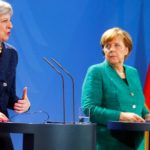
The ongoing war in Ukraine is one of bluffs, raises and daring calls. This week was no exception and if anything, these key developments have laid the foundation for how the future of the war will be handled in Washington, Moscow and most importantly Kyiv. The calls for escalation and peace are in a delicate balancing act for which the stakes have never been higher.
At the start of last week, US President Joe Biden gave the green light for Ukraine to fire American long-range missile systems inside of Russia. Previously, these missiles were restricted for use within the pre-war borders of Ukraine. This shift signals a change within Biden’s administration strategy from merely keeping Ukraine in the fight to a new scenario where Ukraine can strike Russian territory. According to US officials, the weapons are intended to be used primarily in Kursk to repel the increasing efforts of Russian (and now supporting North Korean) forces to retake the oblast.
Ukraine hopes to maintain its foothold in the Russian oblast, utilising Kursk as a bargaining chip for any potential peace negotiations for the return of captured territory. However, Washington’s move to escalate the war is a gamble, as the short-term responses from Moscow are unfolding.
On Tuesday, NATO secretary General Mark Rutte marked the 1000th day anniversary of the war with a speech to the people of Ukraine: “This war must end, but our support for Ukraine will not”. On the other side of Europe, Moscow updated its nuclear weapons doctrine. From now on, an attack from a non-nuclear state, if backed by a nuclear power, will be treated as a joint assault on Russia.
The second half of the week resulted in even graver escalations. Ukraine fired a disputed number of American ATACMS missiles at the Russian territory, with anonymous US officials claiming six of eight missiles reached their targets, while the Russian government reported intercepting five of six. Regardless, the geopolitical impact is great. For the first time in the war, American munitions have now targeted Russian military assets within Russian territory. Following on, the UK became the second NATO member to approve the use of munitions by allowing ‘Storm Shadow’ missiles to target military sites in Russia. Alongside the ATACMS, these pieces of equipment hold high value to Ukraine, however, it also ushers in a new era of instability to war, holding the potential to destroy bunkers and other important military sites.
On Thursday evening, in his address to the Russian people, President Putin stated; “we consider ourselves entitled to use our weapons against the military facilities of those countries that allow their weapons to be used against our facilities.”. This clearly indicated the hostilities would only escalate. Following on Putin’s speech, Russia proceeded to target military industrial complexes in the Ukrainian city of Dnipro with an experimental ballistic missile called the Oreshnik. Analysts argue that the Oreshnik is the next generation of Russian ballistic missiles, considering its capabilities to be fitted with a nuclear warhead and reach anywhere in Europe. Currently, it is near impossible for NATO air defences to intercept, and the strike on Dnipro serves as a warning towards the West’s recent fervour in escalating the war.
This week’s flurry of escalations concludes with the US government approving the supply of anti-personnel mines to Ukraine. This has been seen as a move to slow down advancing Russian forces as they continue to gain more territory. Unlike Russia, the US’ “non-persistent” mines deactivate after a set time limit has elapsed in hopes to reduce civilian casualties after conflict is no longer present in that area. However, as landmines affect 40% of Ukrainian territory, concerns for civilian casualties continue to be raised.
As of today, the war has reached an unprecedented level of tension and more concerningly, there is a growing frequency of disregard for threats. It is apparent that the west has moved past what would have once been very deterring threats from Putin, entering an era where no person truly knows what is a bluff or a promise. The future of Ukraine now lies in a game of geopolitical poker in which all the players have gone ‘all in’.



Average Rating